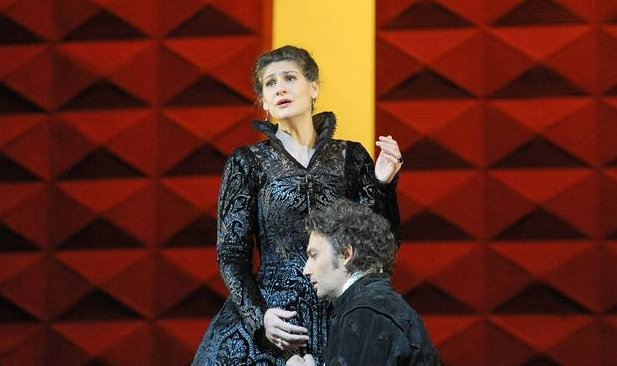|
|
|
|
|
|
|
Evening Standard, 07 May 2013 |
| Barry Millington |
|
|
|
Verdi: Don Carlo, Royal Opera House London, 4. Mai 2013 |
|
|
|
Don Carlo, Covent Garden - opera review **** |
|
|
 Verdi's
loathing of repression and the suffering it brings is projected forcefully
in Nicholas Hytner’s heroic vision Verdi's
loathing of repression and the suffering it brings is projected forcefully
in Nicholas Hytner’s heroic vision
Even at Covent Garden, revivals of
major productions can sometimes look like feeble, under-rehearsed
reincarnations of the original. Clearly for this second revival of Nicholas
Hytner's 2008 Don Carlo in Verdi's bicentenary year, all the stops had been
pulled out.
To begin with, it was under the baton of the Royal
Opera’s music director, Antonio Pappano, who conducted with taut rhythmic
control and a characteristic feeling for the natural shape of music phrases.
No doubt the house was delighted to secure once again Jonas
Kaufmann, currently the world’s favourite tenor, in the title role. Kaufmann
brings to the part a full-throated heroic tone that also magically floats in
response to the nuances of the text.
Don Carlo’s inamorata,
Elizabeth of Valois, is sung by Anja Harteros. Secure of technique and
radiant of tone, her assumption of the role could hardly be bettered.
Mariusz Kwiecien’s Rodrigo is less impulsive than Simon Keenlyside last time
around, but no less intense and perhaps even more noble.
As Philip
II, Ferruccio Furlanetto boasts a powerful stage presence and a voice both
charged with authority and haunted by inner demons.
The Grand
Inquisitor is portrayed convincingly by Eric Halfvarson as crazed and
grotesque; infirm of body, he is twisted in spirit too. As Princess Eboli,
Béatrice Uria-Monzon exhibits the suppressed jealous rage of the tigress she
claims to be. Her O Don Fatale was carried off well, even if it did not
quite eclipse the memories of previous Ebolis on this stage.
Hytner’s
vision may startle those brought up with the handsome naturalistic Visconti
production. Bob Crowley’s designs combine historicism (period costumes) with
ironically referenced postmodernism — the sets make sometimes stylish,
sometimes vulgar use of black, red and gold. For the burning of the heretics
at the auto-da-fé, an impossibly gleaming, gold-encrusted cathedral façade
is juxtaposed with a huge, tasteless image of Jesus’s bleeding head. If this
looks like gratuitous, even pornographic sado-masochism, then the critique
is no doubt aimed at the religious bigotry that induces it.
Verdi’s
loathing of repression and the suffering it brings are projected forcefully
in Paul Higgins’s revival, as is his belief in the ultimate triumph of the
free, radical spirit.
|
|
|
|
|
|